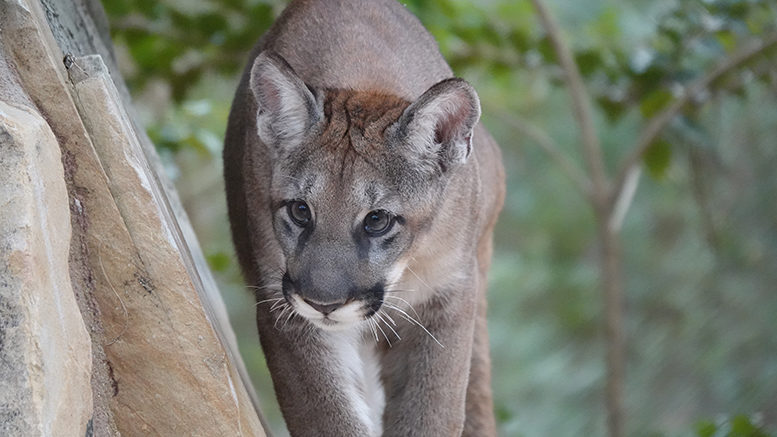By Kayla McManama
Florida is one of the fastest growing states in the United States with St. Johns, Walton and Osceola counties all being ranked in the top 10 fastest growing counties in the country. But while Florida tries to accommodate its growing population, the state’s wildlife is increasingly being forced out of its habitats, and often put at risk of injury or death.
“With most wildlife, we don’t really realize how much it’s all connected and how much it benefits not just other wildlife, but also to people, until it starts to disappear,” said Vincent Vitale, a conservation education specialist at White Oak Conservation Foundation in Northeast Florida.
Florida currently has 27 mammals on the endangered or threatened species list. The Florida Panther is currently on the endangered species list along with the sea turtle, while the manatee has been moved from being endangered to threatened.
Dr. Quinton White, executive director and professor of biology and marine science at Jacksonville University, began his research on Northeast Florida’s manatee population 30 years ago.
“At one point there were 1,200 manatees in the state of Florida and we were killing them faster than they were being born,” he said. “The good news is that we have turned the corner and are starting to see the manatee recover. However, we are experiencing the same issue with the right whale, we are killing them faster than they are being born and I don’t know if we have the ability to change that. So you may see the right whale go extinct in your lifetime.”
When an animal’s home is destroyed, they often travel onto the roadways and interstates. Out of the 27 Florida panther deaths in 2019, 23 of them were caused by vehicle collisions according to Florida Fish and Wildlife Conservation Commission records. Vehicle collisions don’t just happen on land. About 25 percent of manatee deaths are from boat collisions, while with sea turtles it’s 20 to 30 percent, according to Volusia County and NOAA Fisheries.
“As panthers have progressed down in south Florida and through various methods of habitat fragmentation, nothing on its own sinister, but as a collective it’s causing problems and moving them close to the road,” Vitale said.

White Oak Conservation, a 17,000-acre wildlife conservation facility near Jacksonville, Fla., often has panthers come in after colliding with vehicles for rehabilitation and release.
“We had a panther that got hit by a car and ended up at White Oak,” Vitale said. “She was a really tough panther, got all of her surgery done, got back to health, released, had a litter of cubs and got hit by a car again. She then ended up back at White Oak and we got her healthy and released back into the wild.”
Even though boat strikes do still have an impact, for manatees, water quality has turned to be the biggest cause of death.
“The St. John River is such a unique river and it is contained in the state of Florida,” said White. “How much run off is going into the river and how deep the channel is going into the ocean can be very impactful to the overall ecology of the river.”
In order to help these species, Vitale and White both agree that humans need to make a difference.
“People, I think need to learn to deal with their own mess. They don’t always know what to do, but if they can take care of their own stuff and the impact you have on the environment. How they live their life makes a difference,” White said. “I understand that just me not using a straw isn’t a big deal, but if I gradually get other people to do it, then there is a difference.”
For researchers and conservationists, human impact has the power to save, but also destroy the environment.
“As all people, we realize that the sheer power and influence that humans have over the ecosystem and their environment,” Vitale said. “We’re all in this together, whether you’re a scientist or a kid in college going for his MBA. Everything has to do with our natural resources.”



Be the first to comment on "As Florida keeps growing, endangered animals at greater risk"